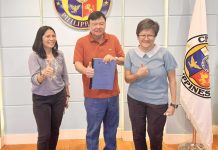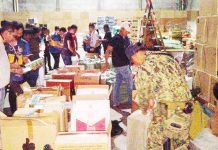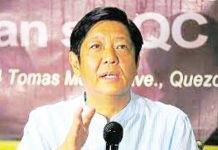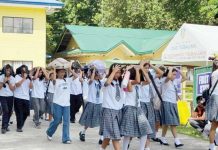BY JHIO JAN NAVARRO
AS PART of the requirements for our Social Recreation Physical Education class, we were tasked to attend the 2020 Dinagyang festivities.
As someone who grew up in Negros, the assignment to be present was supposedly my first time experiencing a festival the Ilonggo way. However, because we attended a convention in Manila which kept us until late afternoon of Jan. 26, the celebration highlight, I only got the taste of the festival at SM City Iloilo mall in Manduriao district where the shuttle unloaded its passengers from the Iloilo Airport. Hence, I must say that I have only seen (experienced) the tip of the ice berg.
Nonetheless, with the drum beatings, costume displays and the volume of people to-ing and fro-ing (people are literally brushing shoulders!), I think it was just as festive inside as it was outside — some fast food chains even dressed some of their employees like Ati warriors in colorful G-strings and headdresses to boost the Dinagyang vibe.
There were a lot of goings-on in the mall that day but what really fascinated me was the festival costume display of each tribe participating in the annual street dancing competition. The designs were elaborate and very creative; these perfectly showcased the culture of arts and crafts of Ilonggos and the colorful heritage of Iloilo’s ethnic people. It more so gave local and foreign tourists alike a glimpse of the Ilonggo creative and cultural prowess.
And, as a special note, to say that the costumes were big was a bit of an understatement; they were massive! The headdresses spanned to a couple of meters — I could only guess how heavy they weighed. To think that they were designed for people to dance! This simply left me in awe.
Beyond these overt cultural observations, I noticed some covert Filipino culture which manifested through the Dinagyang. First, which was the most unmistakable: closely-knit family ties. While going around, one would realize that people snapping pictures were families.
This demonstrated that indeed Filipinos were family-oriented, and that a celebration like Dinagyang (to a great extent this applies to the Catholic faithful) dedicated to the Señor Santo Niño warranted the presence of the whole family, and the absence of family members would make the celebration a little less festive. As a side note, this is arguably the reason why every nook and cranny of the mall was swarming and packed with people.
Another cultural practice qua ritual that I got a glimpse of was the inuman. Traversing the streets from the airport to the mall, one could not possibly fail to notice that the sidewalks were littered with groups of people with their beers and whiskies.
Without inuman, perhaps a Philippine festival won’t be a festival at all. In Filipino psychology, this inuman practice is a social catalyst of sort, especially in the collectivistic Filipino culture as it facilitates the conversion of a hitherto ibang tao to hindi ibang tao (basically from out-group to in-group).
Notice that people drinking by the sidewalk almost always offer a passerby a drink (in Hiligaynon- speaking people, “Pre, shat anay”) regardless whether he/she is a stranger as an act of establishing rapport.
My last observation revolves around Filipinos’ (specifically Ilonggos’) cultural flexibility or the ability to negotiate seemingly contrasting cultural beliefs and practice cultural relativism. For this year, the Dinagyang coincided with the Chinese New Year, and curiously enough these two very different celebrations (one adheres to the Chinese astrology and the other honoring the Señor Santo Niño), converged.
Just beside the festival costume display was a stall selling lucky charms, birth stones according to the Chinese Zodiac, and figurines like the Laughing Buddha and the sculpture of a rat (2020 is the “Year of the Rat”).
Moreover, at a particular Chinese fast food chain, one was welcomed by a person garbed in Dinagyang costume (complete with dark brown to black body paint and all) but was then entertained by a cashier wearing a Chinese traditional costume, hair in a bun, at the counter. Curiously, no one seemed to care.
After people snapped photos from the costume display they stopped by Chinese curiosity stalls. For me this demonstrates that the Philippines is indeed a melting pot of culture where the citizens are, since birth, acculturated and acclimatized to various cultures surging in from both the Orient and the Occident. Hence, Filipinos are well adjusted and can easily negotiate cultural differences with unnecessary bias or ethnocentric reactions.
In retrospect, my Dinagyang experience had not been that dull at all albeit a tad too short. And, if anything, it is my regret that I haven’t got the chance to soak myself up in the glory of the full-blown festivities on the streets and the plazas.
Nonetheless, another year awaits when perhaps I can fully experience a festival the Ilonggo way. (jhionav14@gmail.com/PN)





